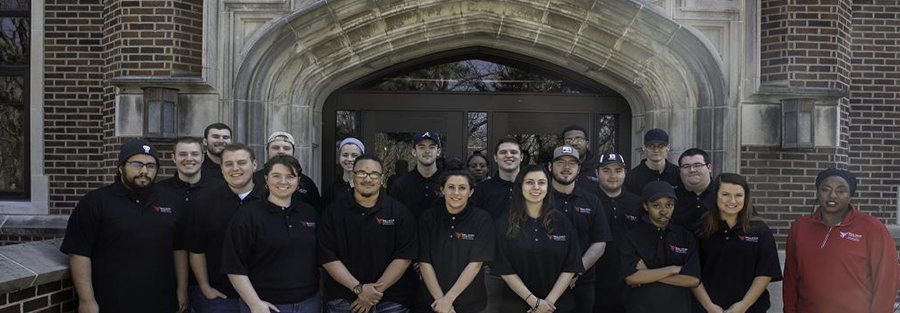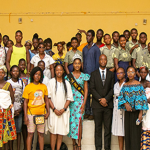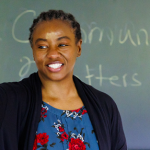I am a Black woman working and teaching within the field of criminology. My students at Ball State University are predominantly White and have had few interactions with Black, Indigenous, and people of color. I feel that it is important for me to disrupt stereotypes my students may have by introducing them to Black people who hold positions of power within the community. Critical service learning (CSL) is a tool that helps me address this issue.
Through CSL, I bring together my students and community partners to address community problems. Unlike traditional service learning, CSL works to (1) redistribute power, allowing community partners to have a voice; (2) incorporate a social change component; and (3) develop authentic relationships. These components enable my students to have transformative experiences.
I employ this approach because it deepens relationships between community partners and students as they share long-range goals and community values. CSL also helps to meet partners’ needs. Unlike traditional service-learning courses, CSL requires community partners to commit time and resources to and invest emotionally in the project. The university must examine the impact on the community partners and assess if they are truly benefiting from the partnership.
My community engagement work focuses on the Whitely neighborhood in Muncie, Indiana. The majority of Whitely’s approximately 2,500 residents identify as African American, and many live below the poverty line. This community has faced many problems—such as experiencing high crime rates, being a food desert, and, at one point, having failing schools—but it has proved its resilience by creating an outreach program and getting its members to work together.
I first began working with the Whitely community in 2017 as a member of its safety committee, made up of community members, city officials, and criminology experts. I attended monthly meetings where I met community members and gained their trust, a vital component of the CSL model.
In fall 2018, a fellow committee member approached me regarding a video that had appeared on social media, showing an interaction between a police officer and a young Black man in another community. The Whitely community felt that the video displayed police misconduct, which magnified community members’ distrust of the police. Whitely community leaders immediately met with the chief of police to discuss the video.
Because I had previously partnered with the community, my fellow committee member asked me to have my students work with community leaders to develop a program to bring the community and police together. This type of project would require extensive relationship building beyond even what I had already established with the Whitely community and would require student involvement beyond the traditional sixteen-week semester class.
Whitely community leaders told me that residents did not know what their personal rights were when it came to interactions with the police. They also did not know what police were allowed (or not allowed) to do in their interactions with the public. Community members were also concerned that their voices were not being heard in interactions with the police. The project with my class would help build trust and improve communication.
The project required buy-in from the Muncie Police Department, the Ball State Police Department, the mayor’s office, and other local agencies. I also had to ensure that the project would meet learning outcomes for the students, such as demonstrating an understanding of culturally sustaining and responsive practices. Once everyone was on board, Whitely Community Council leaders Ken Hudson and Frank Scott and I decided that the class would work with the Facing Project to tell stories of interactions between police and community members and help us bridge the gap between the two groups.
Founded in Muncie by Ball State alumnus J. R. Jamison and author Kelsey Timmerman, the Facing Project is a nonprofit that partners with community groups, classes, and other organizations nationwide to create understanding and empathy through storytelling. They provide tools, a platform, and inspiration for individuals and communities to share their stories, connect across differences, and begin crucial conversations. Writers and storytellers collaborate with participants on first-person narratives that are converted into books or performances and are archived in the Facing Project collection at Ball State University.
When seeking volunteer storytellers from the Whitely community, we did not frame our request for positive or negative stories but instead asked for “individuals who have had an experience with the police that had a lasting impact on their lives.” We used similar phrasing to recruit police officers “who have had an experience with community members that had a lasting impact on their lives.” We also decided that students and community members should organize a community forum to provide police and residents with an opportunity to engage with each other. I worked with Hudson and Scott to develop the course syllabus, and we agreed on assigned readings, due dates of papers and projects, and dates of community engagement events.
We decided that the project would be divided into two semesters, one for the storytelling project and one for the community forum. The students in the fall 2018 Human Services in Criminal Justice course would collect the Facing Project stories, and students enrolled in the spring 2019 Capstone course would develop the community forum. This would allow students to take part in both projects if they chose.



